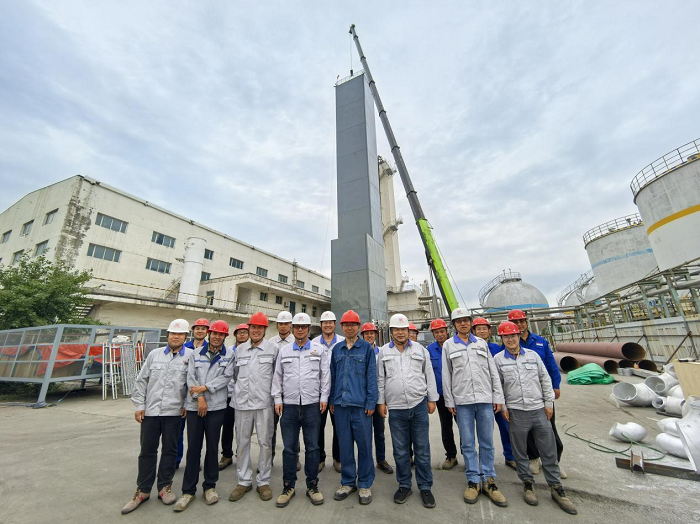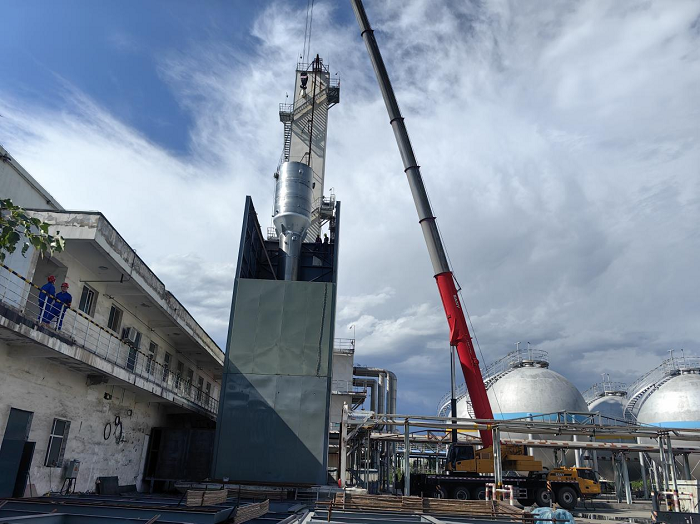Liquid nitrogen, with the chemical formula N₂, is a colorless, odorless, and non-toxic liquid obtained by liquefying nitrogen through a deep cooling process. It is widely used in scientific research, medicine, industry, and food freezing due to its extremely low temperature and diverse applications. So, how is liquid nitrogen formed? This article will provide a detailed answer to this question from several aspects: the extraction of nitrogen, the deep cooling air separation method, the process of liquid nitrogen production, and its practical applications.
Nitrogen extraction
The production of liquid nitrogen requires the first step of obtaining pure nitrogen. Nitrogen is the main component of the Earth’s atmosphere, accounting for 78% of the air volume. Extracting nitrogen is typically done using deep cold air separation technology or pressure swing adsorption (PSA) methods. Deep cold air separation is the most commonly used industrial method. By compressing and cooling the air, it separates oxygen, nitrogen, and other gas components at different temperatures. The pressure swing adsorption method utilizes the different adsorption properties of adsorbents for different gases, achieving high-purity nitrogen through a cycle of adsorption and desorption. These methods ensure the purity and quality of nitrogen as the raw material for the liquid nitrogen production process.
Deep cold air separation method
The deep cold air separation method is one of the key steps in the production of liquid nitrogen. This method utilizes the different boiling points of gases in the air to liquefy and gradually evaporate nitrogen, oxygen, and other gas components. The boiling point of nitrogen is -195.8℃, while that of oxygen is -183℃. By gradually lowering the temperature, oxygen is liquefied first and separated from other gases, leaving the remaining part as higher-purity nitrogen. Subsequently, this nitrogen is further cooled below its boiling point to liquefy it into liquid nitrogen, which is the core principle of liquid nitrogen formation.
The process of liquid nitrogen production
The process of producing liquid nitrogen involves several main steps: First, the air is compressed and purified to remove impurities such as water and carbon dioxide; then, the air is pre-cooled, usually to around -100℃ to improve the separation efficiency; next, deep cold separation is carried out, gradually cooling the gas to the liquefaction temperature of nitrogen to obtain liquid nitrogen gas. In this process, heat exchangers and fractionation towers play a crucial role in ensuring the effective separation of different components at appropriate temperatures. Finally, the liquid nitrogen gas is stored in specially designed insulated containers to maintain its extremely low temperature and prevent vaporization loss.
Technical challenges in liquid nitrogen formation
The formation of liquid nitrogen requires overcoming several technical challenges. The first is the maintenance of a low-temperature environment, as the boiling point of liquid nitrogen is extremely low. During the liquefaction process, it is necessary to maintain a temperature below -195.8℃, which requires high-performance refrigeration equipment and insulation materials. Secondly, during the deep cold process, excessive condensation of oxygen must be avoided because liquid oxygen has strong oxidizing properties and poses potential safety hazards. Therefore, during the design process, the nitrogen-oxygen separation process must be precisely controlled, and appropriate materials must be used to ensure the safety and stability of the system. Additionally, the transportation and storage of liquid nitrogen require specially designed Dewar flasks to prevent temperature rise and liquid nitrogen vaporization loss.
Actual applications of liquid nitrogen
The low-temperature properties of liquid nitrogen make it widely applicable in various fields. In medicine, liquid nitrogen is used in cryosurgery and tissue preservation, such as freezing skin lesions and preserving biological samples. In the food industry, liquid nitrogen is used for rapid freezing of food, as its ultra-low temperature environment can rapidly freeze food, reducing the damage to cell structure and thus maintaining the original flavor and nutrition of the food. In the research field, liquid nitrogen is widely used in superconductivity research, low-temperature physics experiments, etc., providing an extremely low-temperature experimental environment. Additionally, in industrial manufacturing, liquid nitrogen is used in metal processing, heat treatment, and as an inert gas to prevent certain chemical reactions from occurring. Conclusion
The formation process of liquid nitrogen is a complex physical process, mainly achieved through deep cold air separation methods and liquefaction technologies. The low-temperature property of liquid nitrogen makes it play a significant role in various fields such as industry, medicine, and research. From the extraction of nitrogen gas to deep cold liquefaction and finally to its application, each step demonstrates the power of advanced refrigeration and separation technologies. In practical operations, technicians also need to continuously optimize the production process to reduce energy consumption and improve the efficiency of liquid nitrogen production.
We are manufacturer and exporter of air separation unit. If you want to know more about us:
Contact person:Anna
Tel./Whatsapp/Wechat:+86-18758589723
Email :anna.chou@hznuzhuo.com
Post time: Sep-01-2025
 Phone:
+86-18069835230
Phone:
+86-18069835230 E-mail:lyan.ji@hznuzhuo.com
E-mail:lyan.ji@hznuzhuo.com








